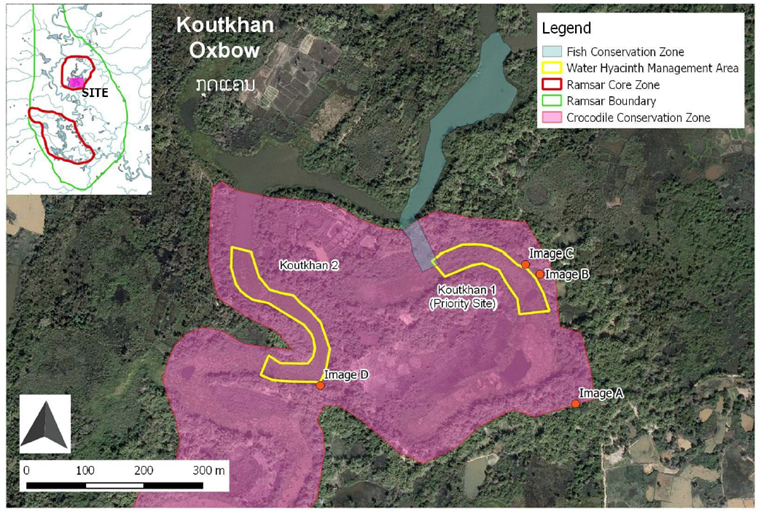Example of interventions to increase connectivity at Kuot Kan
The ability of aquatic animals to move freely between feeding, breeding, and resting areas along sheltered waterways is crucial. The loss of both lateral and longitudinal connectivity stands out as a primary threat to the fish community in the Mekong River. Connectivity is pivotal in sustaining viable fish populations and preventing localized extinction in freshwater habitats is paramount. Interventions aimed at increasing connectivity include:
-
Re-opening wetlands by removing dense patches of vegetation (native/invasive) that hinder fish movements and impede the free flow of water during the dry season.
-
Removing invasive plant species, such as water hyacinth, which can diminish dissolved oxygen levels in the water, often leading to fish kills.
-
Maintaining water quality to prevent chemical barriers, such as low dissolved oxygen and acid sulphate.
-
If man-made structures are the cause of disconnection, they should be removed or locally opened to remove the disconnection
In Kout Kan, the focus of wetland rehabilitation in the oxbows is on improving connectivity, creating more open habitat, and enabling the passage of crocodiles and migratory fish. This involves managing the growth of mimosa and water hyacinth to prevent habitat closure and ensure that fish and crocodiles can move freely.

Management of invasive species, specifically Water Hyacinth, in Khan Oxbow aims to enhance connectivity within the wetland. This effort is intended to extend the corridor movement for crocodile (source: FAO 2017).